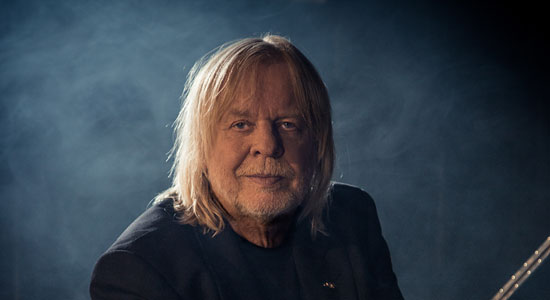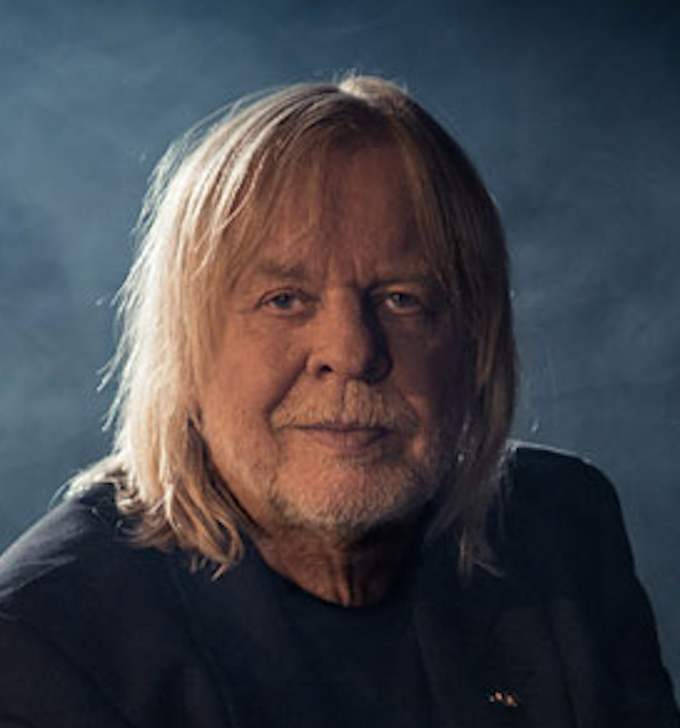
Move past his time as the most grandiose member of prog-rock avatar Yes—the act with whom he’s anointed into the Rock And Roll Hall of Fame this spring—and pianist Rick Wakeman is the soul of subtle sensuality and improvisational classicism who loves deep abiding melody and digs it most when it moves him to complexity. That’s the point of his new solo album, Piano Portraits, a beautiful still-life epic that finds him alone looking back lovingly at his most famous session gigs (David Bowie, Cat Stevens) as well as a hailstorm of traditional British hymns with fire and brimstone. Yeah, he was nearly part of Black Sabbath, and he knows where most of his garish outfits from his wooly mammoth Journey To The Centre Of The Earth solo tour reside.
I know you were wearing a cape during 2016’s Anderson, Wakeman And Rabin tour. What did you do with all of the flowy robes from the whole Journey/Henry VII period? They seemed so heavy.
There are six classic capes, and I have almost all of them, five really, save for the Journey cape. When you’ve been married four times with three divorces, things just disappear. The cape I dragged out for the AWR tour was one I had made in, oh, 1976, for the No Earthly Connection shows. Then there was a dark blue cape that was pretty new, just 10 years old.
So you just have an eye for capes.
I do. But they’re hard to take out with you. First off, they’re heavy. You put them in a flight case and no one wants to lift it.
Did you just re-record Journey and King Arthur?
I did. One of my good friends was Jon Lord (Deep Purple). We were about to record an album together when he was diagnosed with cancer, and within six months, he passed and it never transpired. One thing we discussed before the diagnosis was that he had much music to sort out before it was too late. “When we shuffle off this mortal coil, what we leave is what we’re meant to leave,” he’d say. “So get it right. Tweak them and make them whole.” Two things for me were Journey—recorded live because I didn’t have the money to do it in studio, and King Arthur, which had its original orchestrations missing. With Journey, there were loads of mistakes but the energy was so great—that’s something you never want to correct. Those were the days of vinyl, too, when you could only put so much music on. Journey was nearly twice the length it wound up being when I composed it. Jon told me to make it right, so I did. I heard him saying as much when I did his eulogy. With King Arthur, it was the opposite—I had only 45 minutes of music, but for the 02 2014 Fest, the promoter needed 90 minutes, so I had to pen more music. I have a fest for Arthur coming up in 2018 in the west of England with jousting events and all. It will be mad.
Can you joust?
I highly doubt it because I’ve only ever been on a horse once, and that was for eight seconds. Then I fell off.
Roger Dean still does much of your album art. How do you see his work in your ears, and how does he see your work in his eyes?
Ever since I started playing at age five, I had teachers who told me I paint pictures with my playing. Roger has this absolute knack of getting inside your head and finding those pictures. And he won’t ever do it for the money, no matter how much you offer him. He has to see it and feel as passionately as you do.
Beyond the notion of selecting tracks, what’s the consideration behind finding songs for a solo piano record such as Piano Portraits? It’s as naked as they come.
You’re absolutely right, Number one on my list, a must, is melody. Any variations on music come from strong melodies from the start that you can maneuver around. That’s going back centuries, that, a lovely thing to do—no matter what the length, if you could take a melody and float away in a manner than wasn’t detrimental to the author’s original intent. My style—how I feel and think—then acts as a catalyst for that melody.
We’re talking a year to the day that Bowie passed, and you played Mellotron on his Space Oddity album. What was so great about the Mellotron?
It had the best, windiest sound, but it was a pig of an instrument—forever breaking down. The tapes would snap, hard to keep it in tune. What I use live is a Memotron, a German instrument that sounds just like a Mellotron, which is desperately important for all of the old Yes tracks that I still do—say, “And You And I.”
You do “Life On Mars?” here, and I know its ascending melody on piano has a glorious complexity. Was that rough on you originally?
It’s actually quite simple, but David has this knack, like “Wild Eyed Boy From Freecloud” and “Life On Mars?” You’d be going along comfortably with a series of chords, then suddenly when you’ve settled back into your comfy chair, he would do something wild that would make you sit up—totally tangential. He was brilliant at that. Very clever.
Are you particularly Christian or patriotic? I ask because your “I Vow To Thee, My Country” is a British hymn with a poem attached to it by Sir Cecil Spring Rice that discusses loyalties to homeland and the kingdom of heaven.
I am a Christian with a strong faith, but I can’t stand religion. I find religion has nothing to do with faith these days. Melody again got me. It makes me feel warm by the end of it. At its start, it feels as if you’re taking a deep breath, one you can’t exhale until its end.
—A.D. Amorosi






